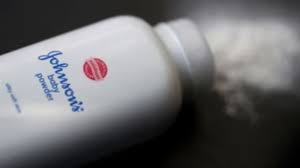On Monday, President Joe Biden urged Americans to unite behind his administration’s initiative to put an end to cancer “as we know it.”
Invoking JFK’s famous moonshot address from 60 years ago at the John F. Kennedy Presidential Library and Museum, Biden hoped to inspire Americans by equating the space race with his own endeavor.
In addition to significantly enhancing the lives of cancer patients and caregivers, Biden wants to bring the United States closer to the goal he set in February of reducing American cancer fatalities by 50% over the course of 25 years. According to experts, the goal is reachable with enough investments.
The president praised it as “bold, ambitious, and I would add, totally doable” to create cancer therapies and treatments.
Biden listed a number of medical improvements made possible with targeted research, funding, and data in his speech, calling on the private sector to make pharmaceuticals more accessible and data more frequently available.
He also mentioned a recent federally funded study that is looking for proof that blood tests may be used to screen for multiple malignancies. This study has the potential to revolutionize diagnostic testing and significantly increase early cancer diagnosis.
The government sees enormous potential at the beginning of the blood diagnostic study on diagnosing tumors, according to Danielle Carnival, the White House coordinator for the initiative, who spoke to reporters.
The development of blood tests that promise to detect various cancers in a single blood test has been one of the most promising technological developments, according to Carnival. “Imagine the impact that may have on our ability to detect cancer early and in a more equitable way,” she added.
According to the American Cancer Society, there will be 1.9 million new instances of cancer identified and 609,360 cancer-related deaths in 2022. The second leading cause of death in the United States, behind heart disease, is cancer, according to the Centers for Disease Control and Prevention.
Since Biden lost his adult son Beau to brain cancer in 2015, the issue is close to his heart. Following Beau’s passing, Congress approved the 21st Century Cures Act, which President Barack Obama signed into law in 2016 and allocated $1.8 billion over seven years for cancer research.
In appreciation of Biden’s anguish as a parent and willingness to take action, Obama appointed Biden, then vice president, to oversee “mission control” for the cancer funding. In his autobiography, “Promise Me, Dad,” Biden stated that Beau’s passing was a major factor in his decision not to run for president in 2016.
In spite of Biden’s efforts to reference Kennedy and his space program, the present project does not have the same amount of financial backing. More than $20 billion, or more than $220 billion in 2022 dollars adjusted for inflation, was allocated to the Apollo program by the public. Biden’s initiative is much more limited and dependent on funding from the business sector.
He has still made an effort to keep the momentum for funding public health research going by supporting the Advanced Research Projects Agency for Health, which was inspired by comparable R&D programs that benefited the Pentagon and the intelligence community.
Dr. Renee Wegrzyn was appointed as the first director of ARPA-H on Monday by Vice President Biden. ARPA-H mandate is to investigate therapies and prospective treatments for diseases like diabetes, Alzheimer’s, and cancer. In addition, he introduced the National Cancer Institute Scholars Program, which will fund young researchers working on cancer therapies and cures with an emphasis on people from underrepresented groups and different backgrounds.
Caroline Kennedy, JFK’s daughter and current U.S. ambassador to Australia, accompanied the president. Additionally, he was scheduled to appear at a fundraiser for the Democratic National Committee later in the day.
It is still far too early to determine whether these new blood tests for detecting cancer in healthy individuals will have any impact on the number of cancer deaths, according to experts. No studies have been done to demonstrate that they lower the chance of dying from cancer. But they nevertheless stress the need of having a lofty objective.
Carnival stated that the longer-term study, which is anticipated to continue for up to a decade, was planned so that any encouraging diagnostic results may be quickly implemented into mainstream practice. The objective, according to her, was to get closer to a time when tumors could be found by routine blood tests, perhaps eliminating the need for more intrusive and taxing procedures like colonoscopies and saving lives in the process.
Scientists now recognize that cancer is actually hundreds of distinct disease, each of which responds differently to various treatments. Existing medications can target certain malignancies’ biomarkers to stop tumor growth. There are still many undiscovered targets.
How do we discover which treatments work best for certain disease subtypes? That seems oceanic to me, according to biostatistician Donald A. Berry of the University of Texas M.D. Anderson Cancer Center. The opportunities are endless. The difficulties are great.
He is hopeful that over the next 25 years the death rate from cancer will be decreased by half, notwithstanding the difficulties.
Berry stated that even without curing anyone, “we can get to that 50% goal by delaying the disease sufficiently across the many tumors.” “If I were to wager, I’d wager that we will reach this 50% cut.”
Making care more egalitarian can advance research even in the absence of new discoveries, according to Dr. Crystal Denlinger, chief scientific officer for the National Comprehensive Cancer Network, a collection of premier cancer hospitals.
And any effort to lower the cancer death rate must concentrate on lung cancer, which is the leading cause of cancer death. Lung cancer currently accounts for more cancer fatalities than any other malignancy, largely due to smoking. More than 350 of the 1,670 cancer fatalities that occur every day in the US are caused by lung cancer.
Screening for lung cancer is beneficial. According to the American Cancer Society, cancer death rates have decreased by 32% since their high in 1991 through 2019, the most recent year for which data is available.
However, only 5% of eligible people receive a lung cancer screening.
In his speech, Vice President Biden emphasized elements of the Democratic Party’s healthcare and climate change legislation that the administration hopes would result in lower out-of-pocket costs for several commonly used cancer treatments. He also praised new assurances for veterans who may have developed cancer after being exposed to hazardous burn pits.
According to Dr. Michael Hassett of the Dana-Farber Cancer Institute in Boston, Biden’s goal of reducing cancer deaths could be achieved by taking two parallel paths: one of discovery and the other of ensuring that the greatest number of people possible benefit from current therapies and preventive measures.
Significant progress is achievable, according to Hassett, if we can handle both issues.

















